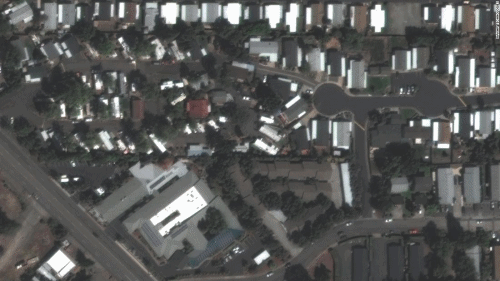A wet winter won’t stave off the Colorado River’s water cuts – “There are discussions going on but they’re not making much progress. The level of distrust and animosity is really remarkable.”

By Joshua Partlow
3 April 2023
GRAND JUNCTION, Colorado (The Washington Post) – The abundant snow in the Rocky Mountains this year has been a welcome relief, but is not enough to overcome two decades of drought that has pushed major reservoirs along the Colorado River down to dangerous levels, Camille Calimlim Touton, the commissioner of the U.S. Bureau of Reclamation, said Monday at the outset of a three-day trip along the river with a bipartisan delegation of senators to push for an agreement on how to conserve an unprecedented amount of water.
The snowpack that feeds the Colorado River — which 40 million people rely on in the West — is at 154 percent of average for this time of year, Touton said.
“This is great thing for this year. But it doesn’t solve a 23-year drought,” she said. “We’re here to find a solution together.”
The trip comes as negotiations among the seven states of the Colorado River basin have stalled, with California proposing one plan for cuts and the other six states — Arizona, Colorado, Nevada, New Mexico, Wyoming, and Utah — offering another. The Interior Department is expected to publish an environmental review later this month intended to clarify its authority to make unilateral cuts to water usage and how those could be distributed if the states don’t reach an agreement.

Colorado Democratic Sens. Michael F. Bennet and John Hickenlooper joined Wyoming Sen. Cynthia M. Lummis (R) for the trip, which is expected to include visits to Arizona, Nevada and California — the Lower Basin states where the most contentious decisions will need to be made to reach the scale of cuts that the federal government is calling for.
“The future of the American West is at stake,” Bennet told reporters.
In June, Touton issued an unprecedented ultimatum to the Colorado River basin states: Cut consumption by 2 million to 4 million acre-feet or the federal government would intervene.
The federal government made that demand as it became clearer that the major reservoirs along the river, Lake Powell and Lake Mead, were falling to levels that threatened the ability to produce hydropower on their dams and even risked a collapse in the water supply for millions of people.
Since then, the states have yet to resolve their differences. In January, the six states agreed to an approach that would cut 1.5 million acre-feet by attributing losses mostly to evaporation of the water as the river travels through a network of reservoirs and canals in the southern states on its way to Mexico.
That method would translate to particularly large cuts for California, which uses the biggest share of the river.
California has rejected that approach and said that it goes against the long-standing system of water rights that has been established over more than a century. Under laws and court rulings dating back decades, in times of shortage, Arizona would lose its right to its water before California.
California’s plan calls for more gradual initial reductions that intensify as reservoirs fall further, hitting Arizona particularly hard. Arizona water authorities view the California plan as impossible for their state to stomach.

Some observers feel the federal government has not done enough to find a solution to the impasse. The longer the dispute drags on — and particularly if it descends into litigation — many worry that the reservoirs could continue to deteriorate.
“There are discussions going on but they’re not making much progress. The level of distrust and animosity is really remarkable,” said Bruce Babbitt, a former governor of Arizona and the Interior secretary under President Bill Clinton, said in an interview.
Babbitt, who left Interior in 2001, has been critical of how the department has handled the crisis. He said President Biden should appoint a mediator to negotiate a solution among the states, something people involved with the talks say is unlikely to happen.
Interior officials, as well as some state water officials, dispute Babbit’s characterization. They say top officials, including Reclamation’s Touton and Interior Deputy Secretary Tommy Beaudreau, have been actively involved in meeting with different parties on the river trying to help the states reach consensus.
“Leadership from the Department of Interior have been in weekly discussions with the Basin States, both separately and together, since last summer,” an Interior spokesperson said in a statement. “This is in addition to robust travel to the area and engagement with the Basin-area Tribes.”
The meetings involving Interior and the states normally take place on Fridays, either in conference calls or in person, including last month in Phoenix, according to state officials.
During a news conference Monday inside a warehouse at the Orchard Mesa Irrigation District outside Grand Junction, with the Colorado River rushing outside, Touton and the senators struck an upbeat note about the possibility of reaching an agreement among the states to protect the river.
Bennet said he wants the solution to be found among the states rather than from Washington. He added that there is now broad consensus among the states about what the science is saying about where the river is headed and the impact of the historic drought.
“This was not around five years ago or 10 years ago,” Bennet said. “It is here today and that’s why I think this is not just silly optimism. [There is] a desire for us to strike while the iron is hot at a moment when we have the resources that we need for once to be able to do what’s necessary” for all the states to agree.
The Inflation Reduction Act includes $4 billion for the Western drought that includes payments to farmers who are willing to conserve Colorado River water by fallowing or making irrigation more efficient.
Touton said Monday that “the reality is we want agriculture to continue in the basin as well as being able to support” all the other uses, including for cities, ecosystems and Native American tribes.
“It’s true to our track record that we’re going to work together and work through these issues, which aren’t easy but we’re committed to doing that,” she said.
Hickenlooper added that the wet winter is “joyous, but this is in no way any kind of solution.”
“It gives us a little bit more time to figure out what the solutions will be.”
A wet winter won’t stave off the Colorado River’s water cuts



